ecology slide deck 5 (population ecology part 1)
1/24
There's no tags or description
Looks like no tags are added yet.
Name | Mastery | Learn | Test | Matching | Spaced |
|---|
No study sessions yet.
25 Terms
population
a group of individuals of the same species that inhabit a given area
populations have structure including
density, spacing, and age distribution
the distribution of a population is
the area over which it occurs
the geographic range of a species encompasses
all of the individuals of a species
examples of geographic barriers
bodies of water, mountains, large areas of unsuitable habitats
metapopulations
collection of local subpopulations linked through dispersal or other means of genetic exchange
abundance
number of individuals in population
density
area over which population is distributed
there are three distribution patterns that are seen in organisms
random, uniform, and clumped
random
spaced unpredictably
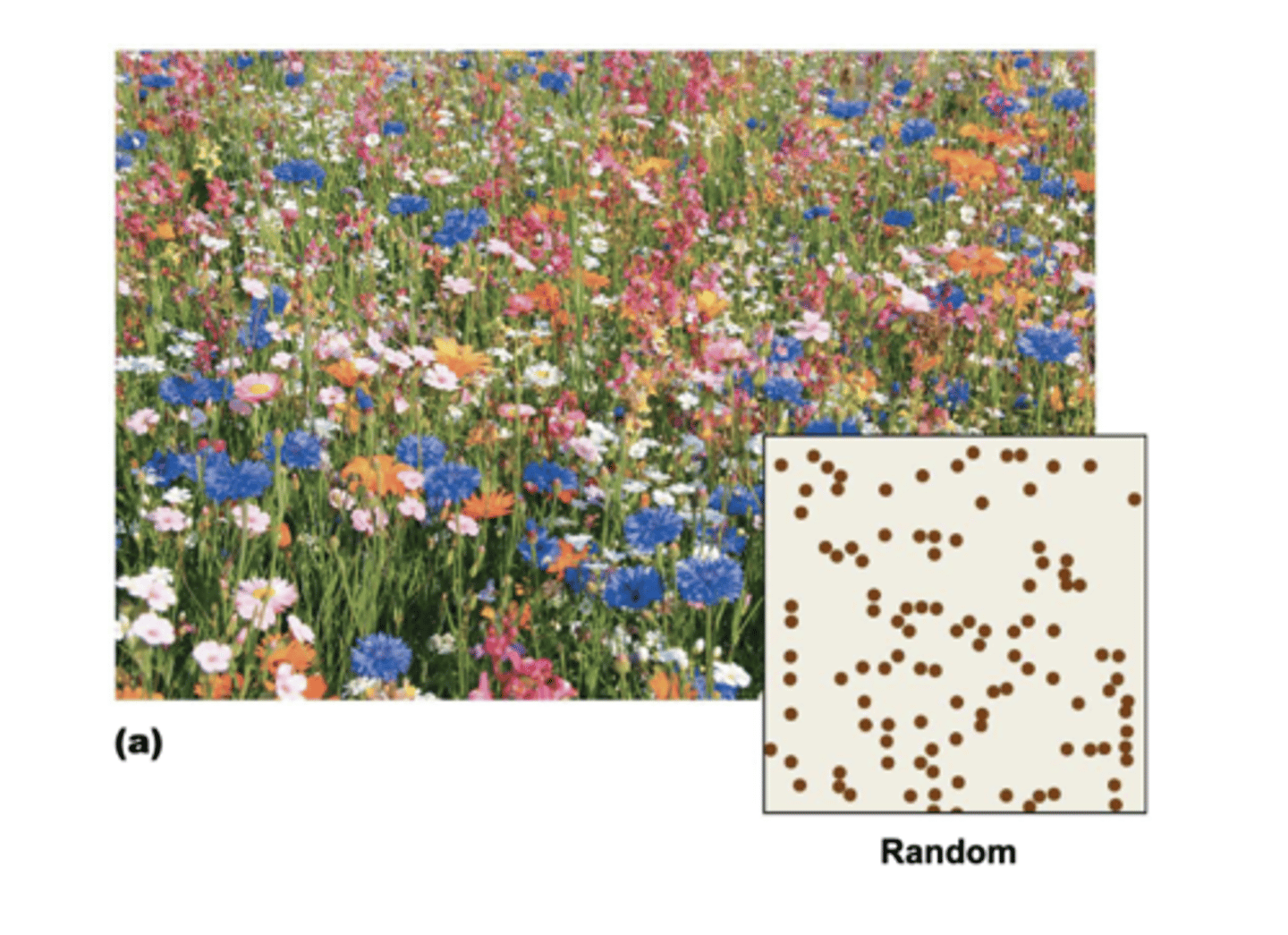
uniform
evenly spaced
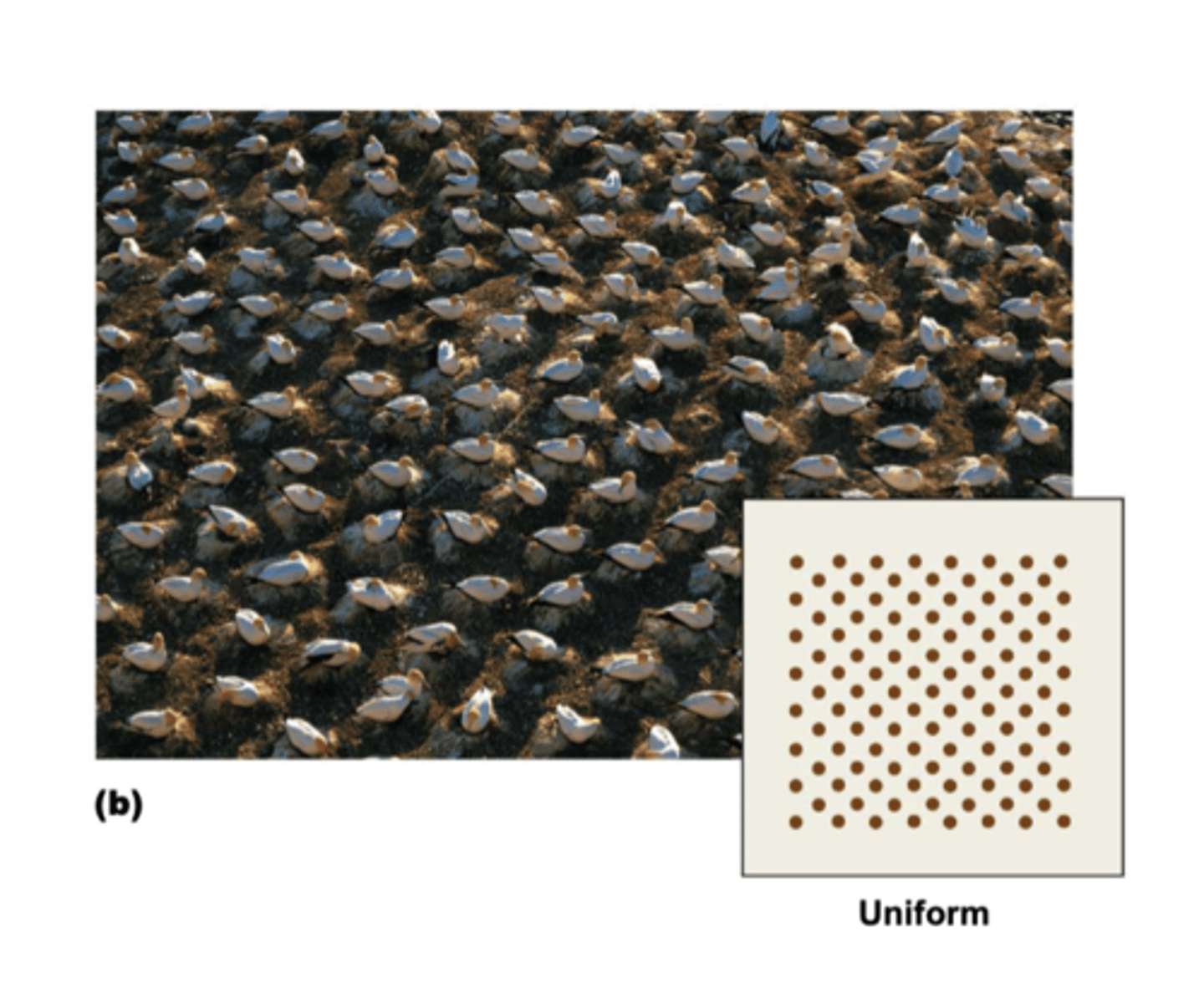
clumped
grouped in patches
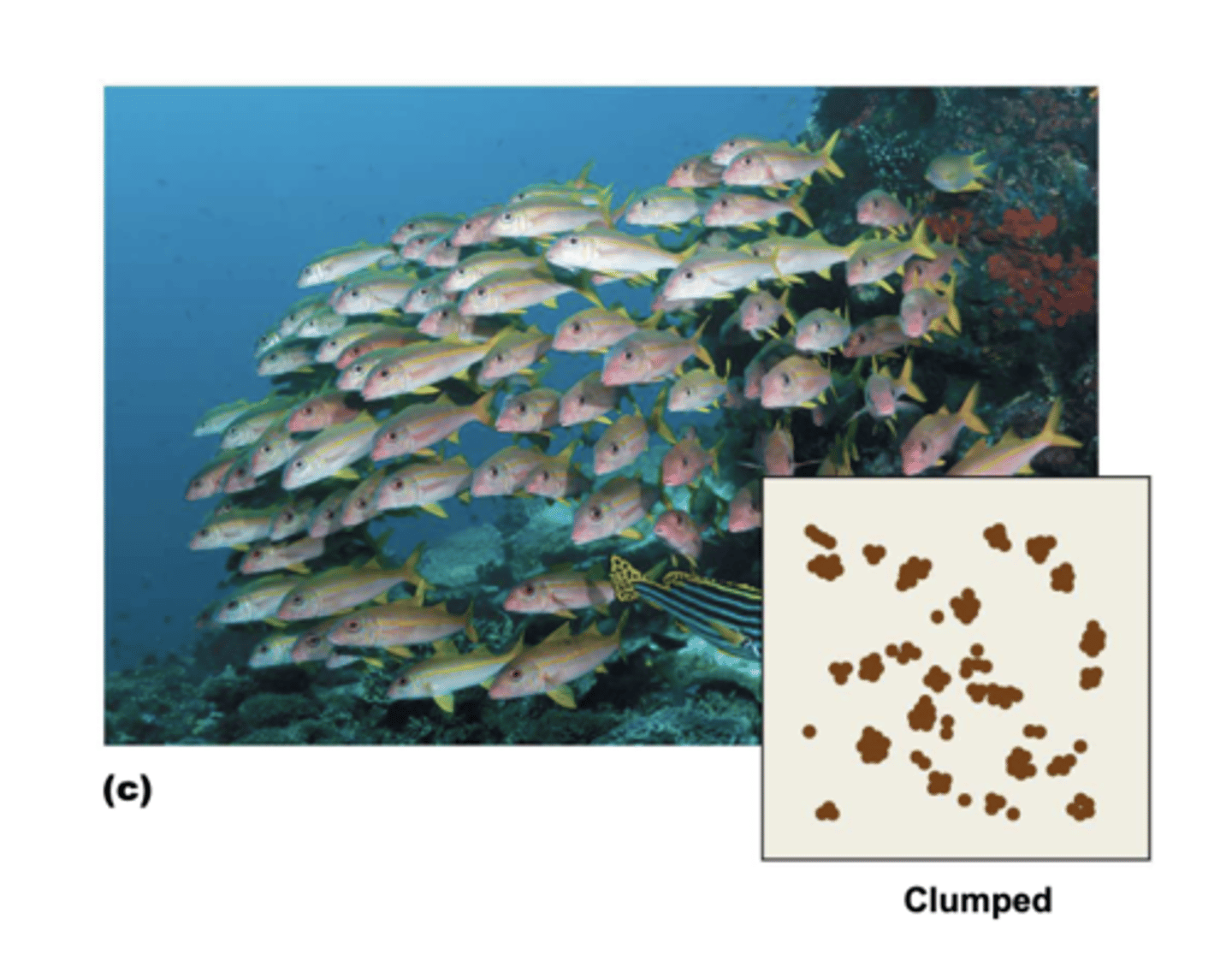
population size (abundance) =
populations density x the area occupied
absolute density (25 gopher tortoises/hectare)
complete count of individuals/area
relative density (25% sunflowers/m2)
proportion of species relative to others in a community
quadrat sampling
sample area of a given shape
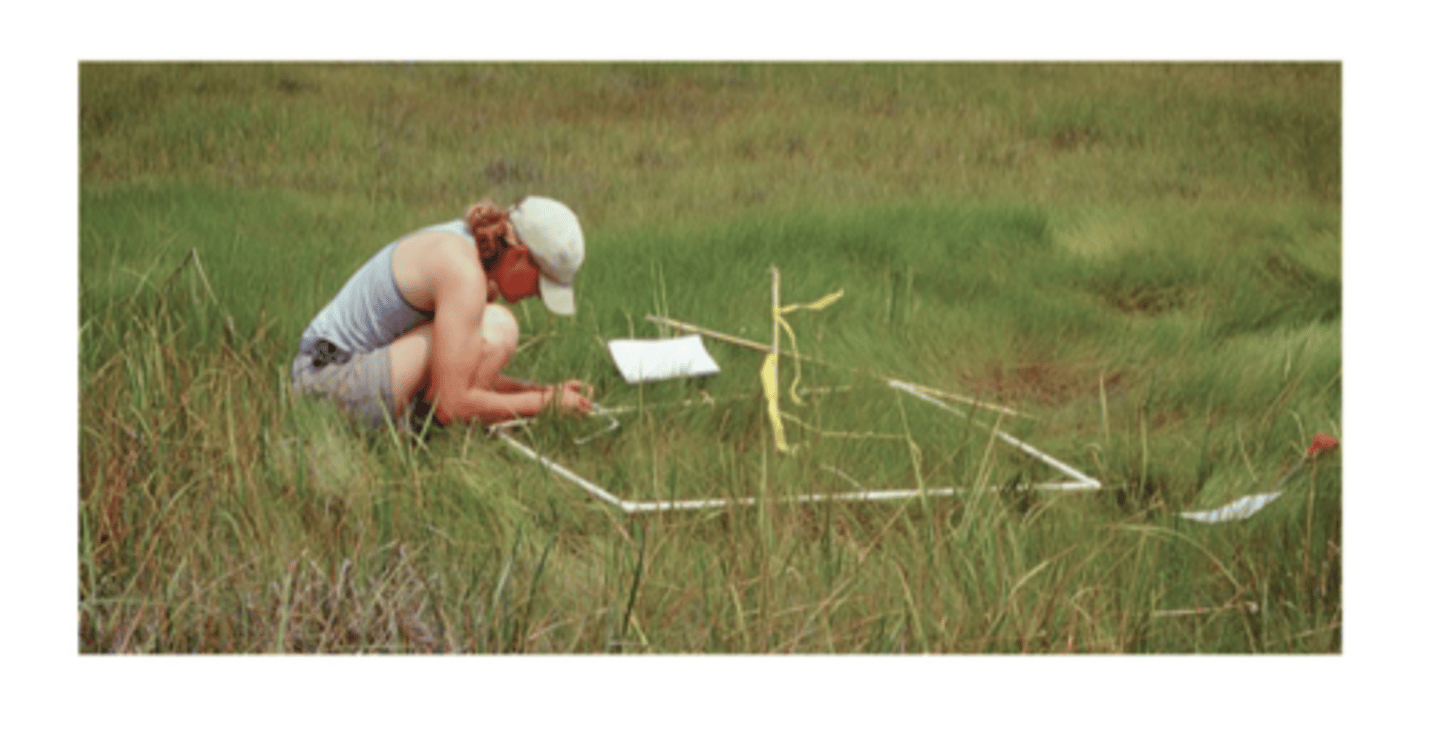
transects
sample along a line or path
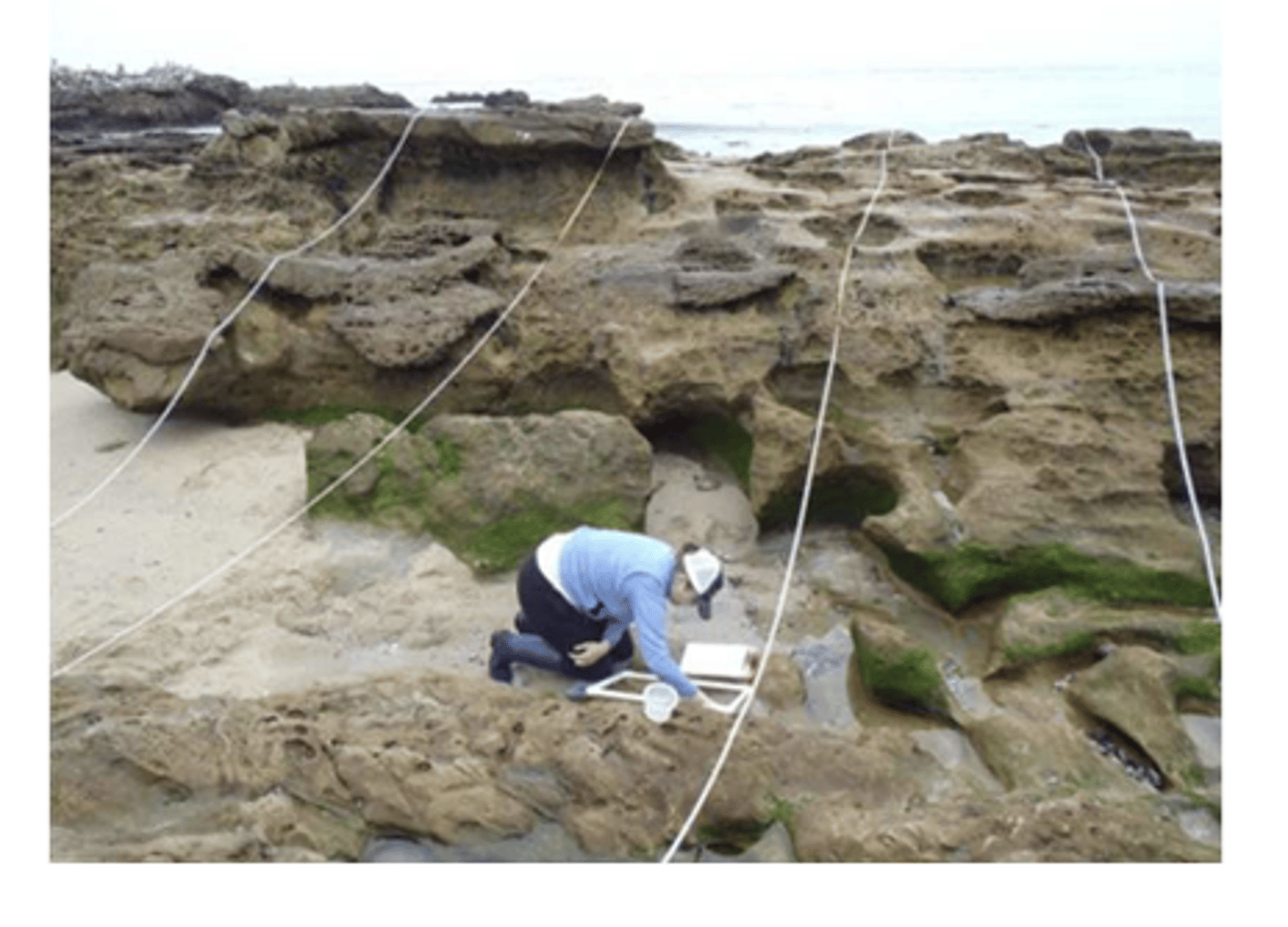
mark-recapture
capture, mark, release, recapture
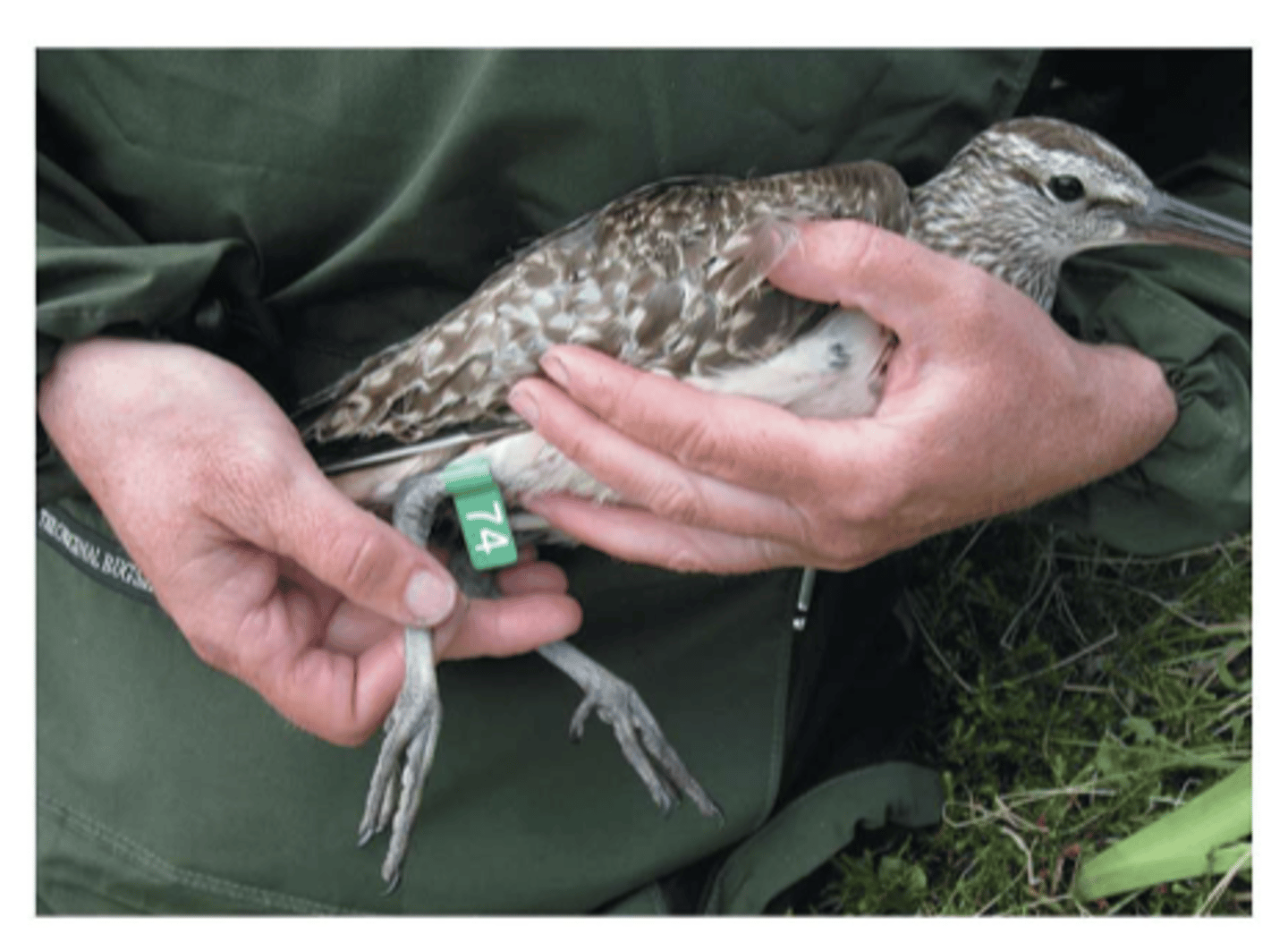
lincoln-petersen method
N=nM/R
N=
number of animals in the population
M=
number of animals marked on the first visit
n=
number of animals captures on the second visit
R=
number of recaptured animals that were marked
lincoln-petersen assumptions
sampling is random for marked and unmarked individuals, mark doesn't cause injury with adverse effects to individuals, mark doesn't make it easier for predators to locate marked individuals, marks are not lost, marked and unmarked have same mortality
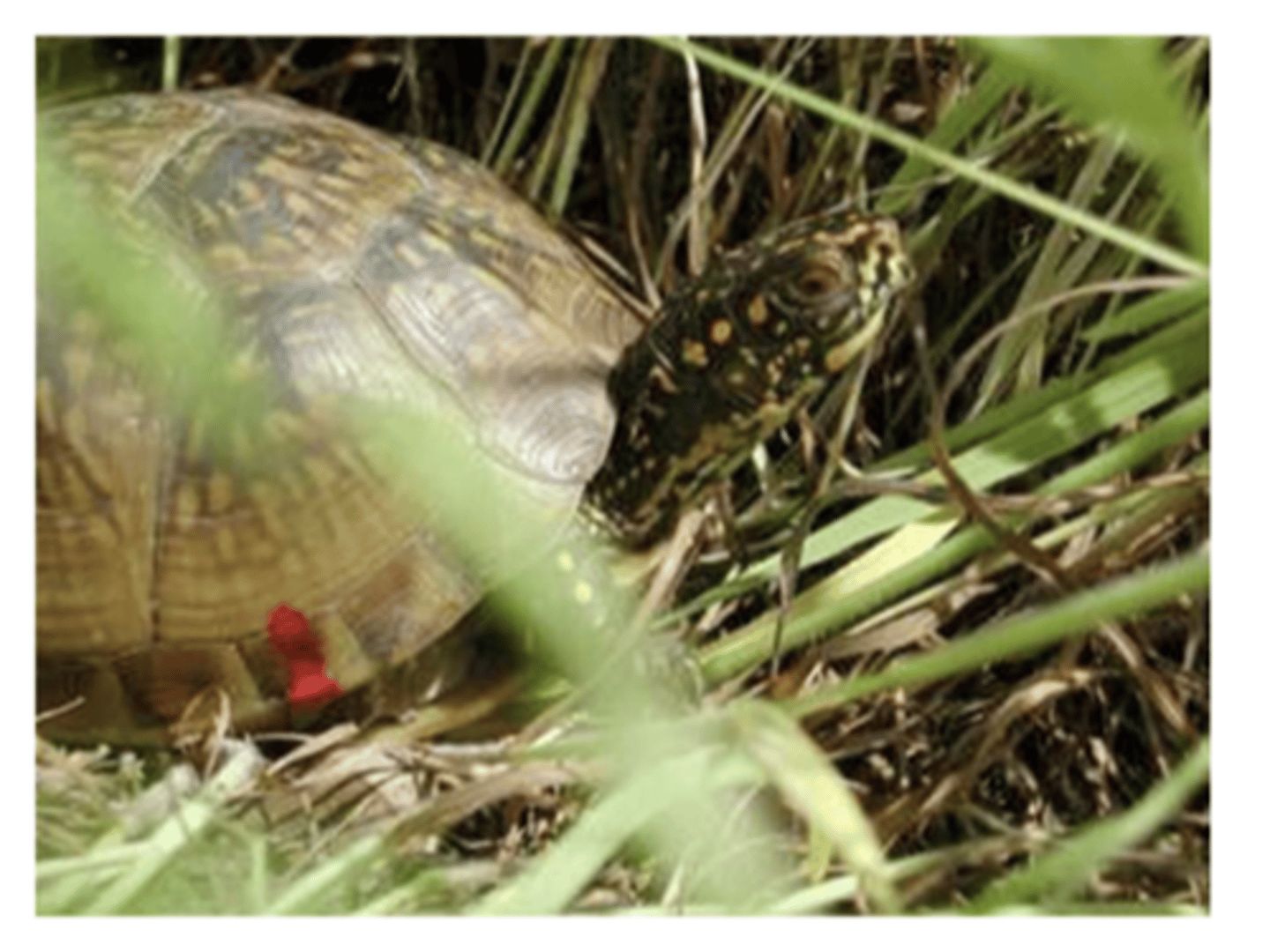
traps
live animal traps, light traps, pitfall traps, plankton nets
